¶ Introduction
Attitude instrument flying is the first part of the practical instrument flight training. In this part you will learn how to control a helicopter by reference to the instruments rather than by outside visual cues. When pilots lose visual references due to low visibility, the only remaining source which shows the current attitude of the helicopter are the on board instruments.
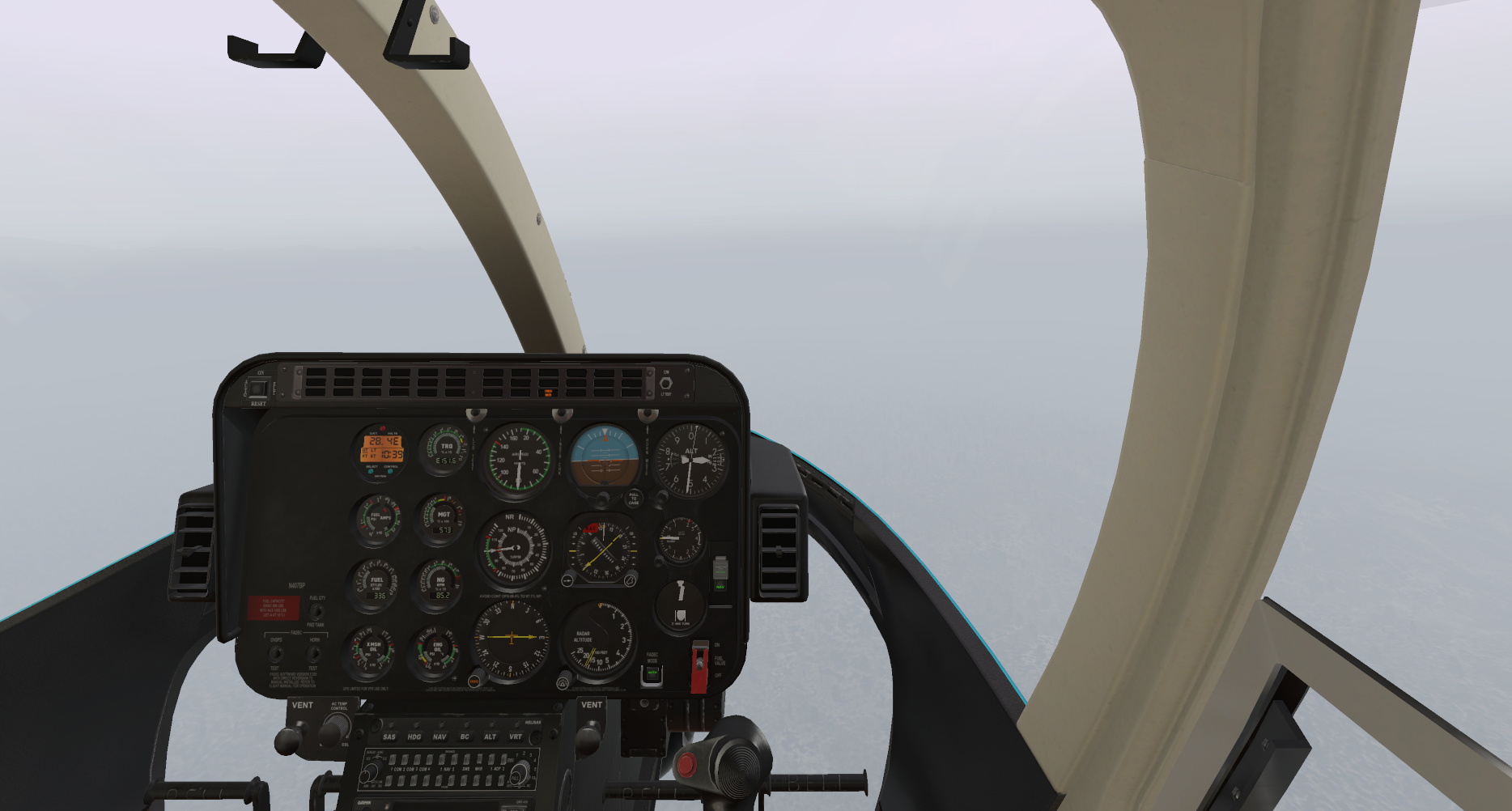
Attitude instrument flying is a common subject for both fixed and rotary wing pilots. Before starting your IFR procedural training, you must learn how to control your aircraft by yourself without any assistance from automatic flight systems.
So much the more vital this is for helicopter pilots since they usually fly in visual flight conditions with less sophisticated avionics on board. In bad weather conditions, it is more likely for a helicopter pilot to enter inadvertent instrument meteorological conditions which basically means IFR flight without preparation.
In this case, a thorough ability of attitude instrument flying is the key to a successful transition of your flight from visual to instrument conditions.
You will need to develop three fundamental skills for successful attitude instrument flying:
- Instrument crosscheck
- Instrument interpretation
- Helicopter control
The success in attitude instrument flying depends on applying this cycle continuously and correctly.
¶ Instrument Cross-Check
Cross-checking, often called scanning, is the continuous and logical observation of instruments for attitude and performance information.
Continuous and logical application of instrument cross-check ensures situational awareness in the cockpit.
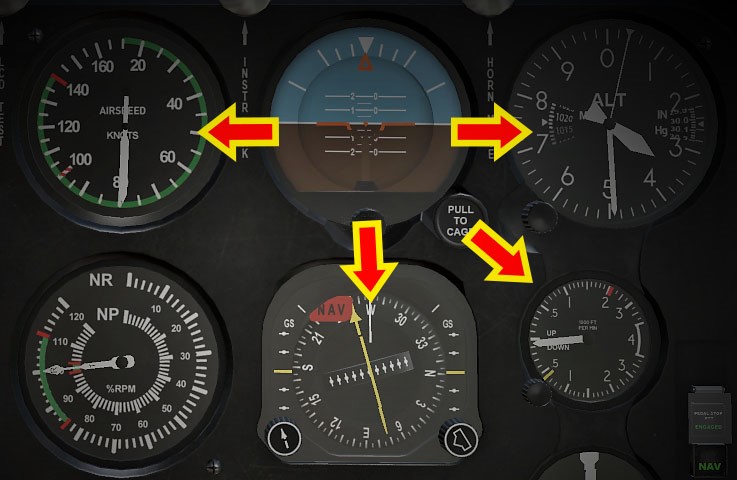
Due to human error, instrument error and helicopter performance, which varies in different atmospheric and loading conditions, it is difficult to establish an attitude and have performance remain constant for a long period of time.
These variables make it necessary to check the instruments and make appropriate changes in the helicopter's attitude constantly.
¶ Instrument Interpretation
The flight instruments together give a picture of what is happening. To understand the helicopters current state in the most effective way, scanning these instruments in correct order is very important.
No instrument is more important than the next. However; during certain manoeuvres or conditions, those instruments that provide the most pertinent and useful information are called primary instruments. Those which back up and supplement the primary instruments are called supporting instruments.
¶ Helicopter Control
Controlling a helicopter is the result of accurately interpreting the flight instruments and translating these readings into correct control responses.
Aircraft control involves adjustment to pitch, bank, power and trim in order to achieve a desired flight path.
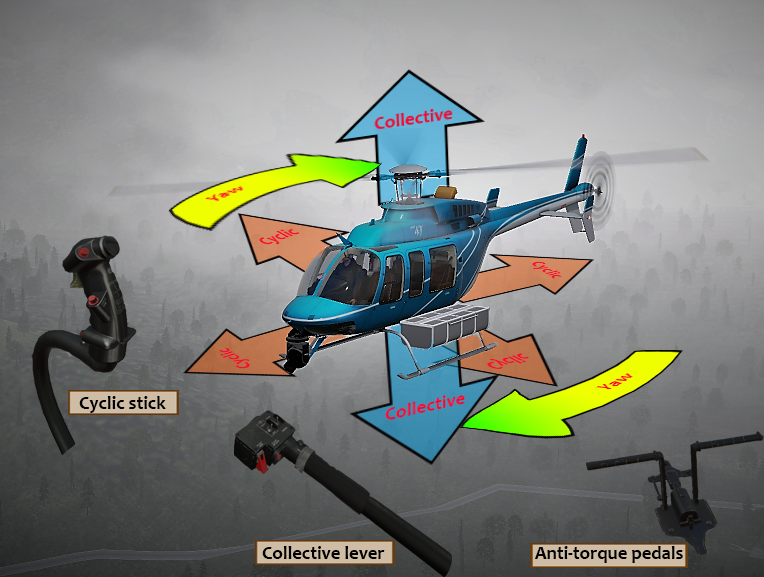
¶ Pitch Attitude
The pitch attitude of a helicopter is the angular relation of its longitudinal axis to the natural horizon.
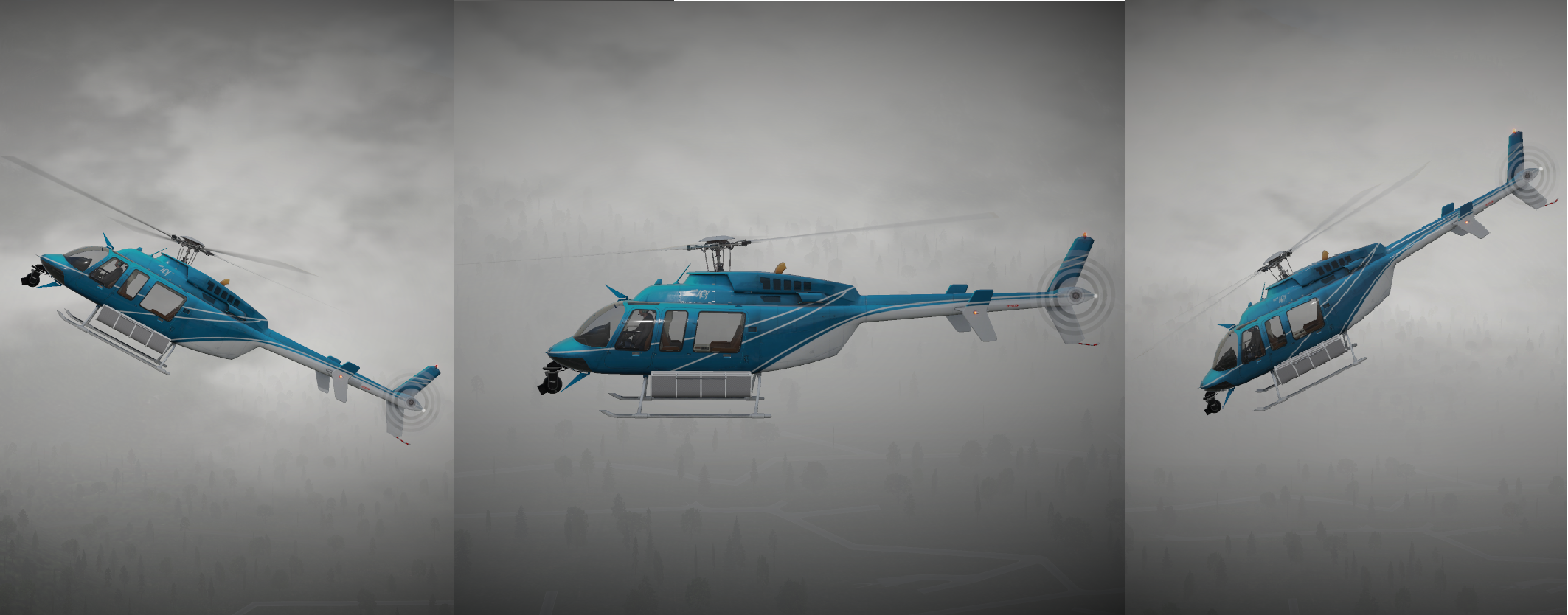
A low pitch attitude ends up with increasing speed and decreasing altitude, a high pitch attitude ends up with decreasing speed and increasing altitude.
Pitch control refers to controlling the helicopter about its lateral axis by the cyclic stick.
Instruments giving pitch information are;
- Attitude indicator
- Altimeter
- Airspeed indicator
- Vertical Speed indicator.
¶ Attitude Indicator
The attitude indicator gives a direct indication of the pitch attitude of the helicopter. In instrument flight, attain the desired pitch attitude by using the cyclic stick to raise and lower the miniature aircraft in relation to the horizon bar.
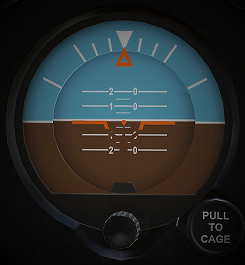
¶ Altimeter
The altimeter gives an indirect indication of the pitch attitude of the helicopter. A decreasing altitude is the indication of low pitch; an increasing altitude is the indication of high pitch.
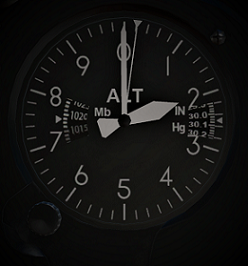
¶ Vertical Speed Indicator
The VSI gives an indirect indication of the pitch attitude of the helicopter and should be used in conjunction with the other pitch instruments to attain a high degree of accuracy and precision.
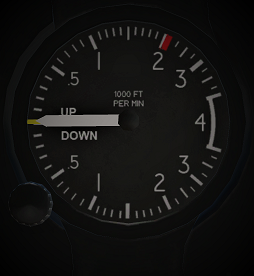
¶ Airspeed Indicator
The airspeed indicator gives an indirect indication of helicopter pitch attitude. An increasing speed is the indication of low pitch, a decreasing speed is the indication of high pitch.
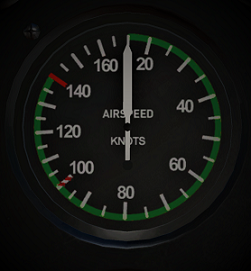
After interpreting the helicopter's pitch instruments, cyclic stick adjustments are made to effect any required change.
¶ Bank Attitude
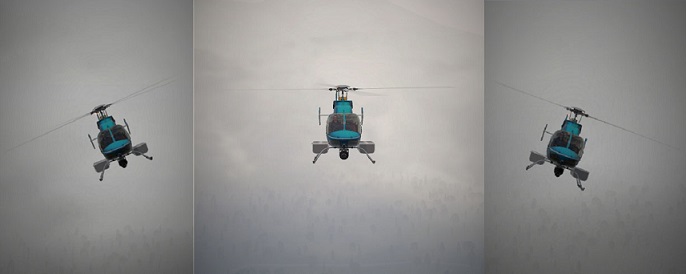
The bank attitude of a helicopter is the angular relation of its lateral axis to the natural horizon.
High bank degrees should be avoided during IFR flight since they increase the demand for power and coordination.
Bank control refers to controlling the angle between the rotor disc and the natural horizon by the cyclic stick.
Instruments giving bank information are:
- Attitude indicator
- Heading indicator
- Turn indicator
¶ Attitude Indicator
The attitude indicator gives a direct indication of the bank attitude of the helicopter. Bank degree marks are placed on the upper periphery of the dial to assist pilots. The short degree marks on both sides of center are 10 degrees apart and the long degree marks are 30 degree apart.

Any change in bank attitude of the helicopter is indicated instantly by the miniature aircraft.
If the helicopter is properly trimmed and the rotor tilts, a turn begins. The turn can be stopped by leveling the miniature aircraft with the horizon bar.
¶ Heading Indicator
In coordinated flight, the heading indicator gives an indirect indication of a helicopter's bank attitude.
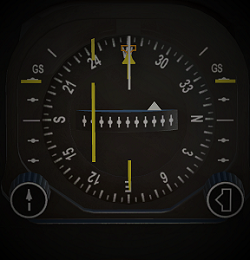
When a helicopter is banked, it turns and the heading indicator deviates. When the lateral axis of a helicopter is level, it flies straight.
A turn can also be detected on the heading indicator without any indication of bank on the attitude and turn indicator. This means that the helicopter is turning around its yaw axis.
This happens when the airspeed of the helicopter is critically low and should be corrected immediately with adverse rudder and forward cyclic input.
¶ Turn and Slip Indicator
During coordinated flight, the needle of the turn-and-slip indicator gives an indirect indication of the bank attitude of the helicopter.
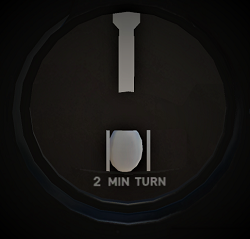
While the roll indicator of the attitude indicator deviates to the opposite side of the turn, the turn indicator needle deviates to the direction of the turn. This situation often creates confusion between pilots and may lead to a wrong control input.
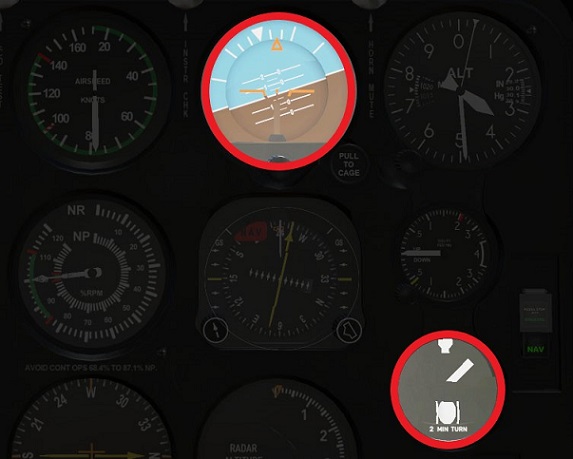
To avoid confusion, always keep in mind that when the needle is displaced from the vertical position, the helicopter is turning in the direction of the displacement.
After interpreting the bank instruments, cyclic stick movements are made to attain the desired bank attitude.
¶ Power Control
Power control refers to the application of collective pitch with corresponding throttle control, where applicable.
While power change is used by airplanes to increase or decrease thrust, helicopters use it to increase or decrease lift.
Instruments giving power information are;
- Manifold Pressure or
- Torque indicator, depending on the type of helicopter engine.
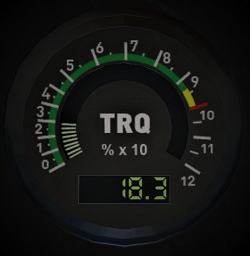
After interpreting the power instrument, collective control movements are made to attain required power setting to keep desired altitude/airspeed.
In order to fly a helicopter by reference to the instruments, it is important to know the approximate power settings required for a particular helicopter in various load configurations and flight conditions.
¶ Trim
Trim refers to the use of pedal adjustment to centre the ball of the turn-and-slip indicator and the ball should always be kept centered through proper pedal trim.

All power changes directly increase or decrease anti-torque effect of the main rotor and this effect causes the ball of the turn-and-slip indicator to deviate left or right.
To avoid deviation, pedal input is required during all power changes.
- Instrument Flying Handbook (FAA-H-8083-15B)
- VID 522050 - Creation
- VID 496402 - Wiki.js integration